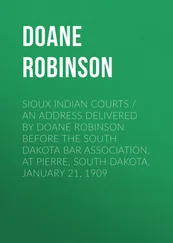Though not as financially successful as Washington acolyte, pastor, and insurance man Christopher First Johnson nor as well known as labor leader and store owner Ralph Clemmons, the Whitesides were a part of this economy which served Black Mobile, achieving, in fact, a semblance of economic independence. But, soon after, their failing health forced a primary school-educated Cap to emerge as the family’s economic glue, a situation that was made more urgent after his older sister and mother passed in the first half of the 1910s. Facing the possibility of financial disaster, he sought and attained full-time employment at a cigar factory and would soon begin a family of his own, but not without further turmoil. Cap married Cedric’s bloodline maternal grandmother, Corine Cunningham, in 1916. Their family apparently included some Native American and French ancestry. She had lived in Mobile with her mother and grandmother before moving into the Whiteside family house and caring for her father-in-law, Benjamin. After giving birth to Cap’s three daughters in quick succession, the marriage abruptly ended and Cap later married Cecilia, whose assault would serve as the impetus for abandoning their lives in Mobile.
The rich textures of institutional and associational life in Black Mobile extended the militancy of the Reconstruction era to the period of the Nadir – often beyond and against the middle-class pretensions of Washington’s followers. This political tradition was at once representative of Black resistance writ large and deeply connected to the contexts of Nadir-era Alabama. And Cap was its product. His generation, those who lived at a time in Alabama where the 1901 state constitution openly mandated segregation and disfranchisement, responded most famously with a streetcar boycott, which was followed by a contentious strike of Mobile’s back longshoremen, who were affiliated with the International Longshoremen’s Association. 17This threat of Black organizing and self-assertion led directly to a spike in racist violence, including a number of lynchings within the Mobile city limits. The Whitesides would have remembered the scene of Richard Robertson’s 1909 extrajudicial murder by hanging, a violent spectacle that took place across the street from the historic Christ Episcopal Church in downtown Mobile. The Nadir was real in Mobile, even as the city fathers often brandished the city as a paragon of progress and a “new South.” 18But those labels, products of boosterish corporate imaginations, could not assuage the discontent that led to Black out-migration during the late 1910s and 1920s – a retreat northward and westward that the Whitesides would soon join.
Responsibilities of a community
The Oakland to which Cap arrived was not yet the space it would become after the wartime industrial transformation that preceded an influx of Black migrants from Texas, Louisiana, Arkansas, and other southern states. But it was not a culturally barren place either. By the late 1920s, many of the social and political institutions that would become the foundation for the new entrants were in place. They would soon remake Oakland.
But before that occurred, earlier migrants from the South, who had increased the Black population sixfold to over six thousand people from 1900 to 1920, were drawn to service jobs and opportunities associated with the three transcontinental rail lines for which the city served as a terminus, as well as eventually those within the shipbuilding industries. Almost immediately, they asserted what Dolores Nason McBroome described as an “economic militancy” that was largely framed within its religiosity and communal determination. Utilizing self-help organizations and a growing labor consciousness, these militant postures were desires to realize and live against the racial proscriptions that continued to set the political terms for their realities. At the apex of an organizing tradition that sought otherwise terms were organizations like the National Association of Colored Women, the National Association for the Advancement of Colored People, and Marcus Garvey’s Universal Negro Improvement Association. Activists like C. L. Dellums, Tarea Hall Pittman, and Frances Albrier fought for employment opportunities and legal and civil rights on behalf of Black Oakland alongside religious leaders like John Snape and H. T. S. Johnson who joined their efforts by anchoring the community in the spiritual traditions they brought with them. 19
As more jobs became available, the perennial challenge of housing shortages amid residential segregation reared its ugly head. Since the late nineteenth century, the neighborhoods of West Oakland had been a viable, but at times suboptimal, location for the Black community, given its close proximity to the rail lines and the requirements by some employers that workers be on call. In short order, a vibrant community of day laborers, factory workers, mechanics, and engineers had appeared. This community also included, perhaps most significantly, a large presence of Pullman porters, which by the mid-1920s under the leadership of A. Philip Randolph and Dellums was organized through the Brotherhood of Sleeping Car Porters and Chambermaids, becoming a critical force in Black working-class politics throughout the country. 20It was also the community that Winston Whiteside would call home, living first at 1448 Jackson Street before renting a home at 34th and West Streets, and finally securing their permanent home at 3020 Adeline Street, just north of the McClymonds neighborhood. 21
For those unable to hop aboard the Pullman cars, opportunities were relatively sparse. Laborers were subject to the whims of uncertain market conditions. But Cap was industrious and strong-willed. He would not be denied. After finding work in downtown Oakland, he found community and meaning in the spiritual traditions that had been deposited in West Oakland. Though the African Methodist Episcopal and Baptist churches were dominant, Cap converted to the Seventh Day Adventist Church, where he would have found a resonant, deep religious experience that bound him to a vision of a new land and world beyond, but also to a strict sense of moral uprightness in the here and now. 22And he was a strict adherent to these views, eventually hosting Bible studies at his home. In their religious instruction, the Whitesides understood authority beyond earthly power, beyond our lesser human experiences. Though Cap was gentle, remembered for the power of his dignity and deep respect for others, this was a theology that could be wielded with a heavy hand. His ability to convey the necessity of moral control may have defined him more than any other set of attributes. 23In 1933, after witnessing a store being held up at gunpoint (a toy gun, it was later discovered), Cap, who was all of 5 ft. 4 in., sprinted down the street to prevent the assailant from fleeing in a taxicab. Such an act garnered him a mention in the local papers. 24He simply could not overlook a wrong. This would have meaning for Cedric’s birth and childhood.
After a year of consistent work as a janitor downtown made it possible, Cap sent for Cecilia and the girls. It was the year before the stock market crash, and Black Oakland was growing and jobs were available, even as housing accommodations remained stagnant. And then the expansion suddenly ended. As elsewhere, in Oakland, the Great Depression meant a deepening of inequality in the Black community. With unemployment crippling the community, a mix of self-help voluntarism, “Don’t Buy Where You Can’t Work” campaigns, and labor agitation provided vehicles for activists to buoy West Oakland through the crisis. 25And also, as elsewhere, the presence of radical forces provided an alternative analysis of “the problem” – one that saw it as a problem of racial capitalism. 26But at the core of West Oakland during the Depression was a community, an attempt to forge togetherness in the face of hardship.
Читать дальше












